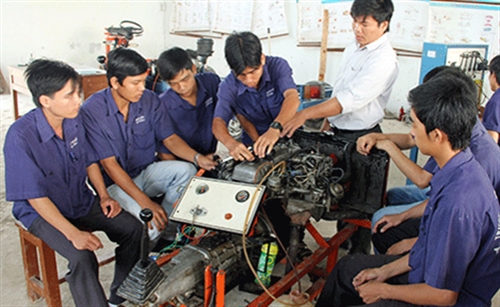By 2030, Vietnam will have between 40 and 50 science and technology organizations ranked among the top regional and global ones, according to a strategy for science, technology and innovation development through 2030 approved by the Prime Minister under Decision 569/QD-TTg dated May 11.
The strategy says science, technology and innovation play an important role in the development of spearhead industries, particularly processing and manufacturing industries, contribute to the economic restructuring aimed at turning Vietnam into a modern industrial country by 2030. It sets a target that by 2030 the proportion of hi-tech industrial products in processing and manufacturing industries will reach at least 45 percent.
At the same time, science, technology and innovation are expected to significantly contribute to building and developing cultural, social and human values of the country, provide scientific grounds for formulating national development guidelines and policies, and help maintain the human development index (HDI) at over 0.7, and improve Vietnam’s Global Innovation Index (GII) to reach the top 40 innovative countries in the world.
Investment in science and technology will account for 1.5-2 percent of GDP, with total national expenditures for scientific research and technological development accounting for 1-1.2 percent of GDP, while social contributions to scientific research and technological development will account for 65-70 percent of the total social investment.
For 10,000 people, there will be 12, mostly in the enterprise sector, engaged in scientific research and technological development.
The number of enterprises satisfying criteria for being treated as science and technology enterprises will be doubled the present figure, and up to 40 percent of total enterprises will be engaged in innovation activities.
To achieve the above targets, it is required to set up the national innovation ecosystem closely linked with regional and global innovation ecosystems. Innovation ecosystems in industrial, agricultural and service sectors will also be developed in connection with domestic and global value chains and industrial clusters, in which large enterprises will be responsible for leading innovative activities while state administrations will create institutions and policies for promoting the linkage among enterprises.
Besides, national, sectoral and regional innovation centers and innovative startup support centers will be built and linked with hi-tech parks, residential areas, financial centers, venture capital funds, universities and research institutes to form innovation clusters.
Under the strategy, open innovation platforms and networks will be established to attract domestic and foreign investments in creation of new technologies and products and establishment of new enterprises.- (VLLF)








